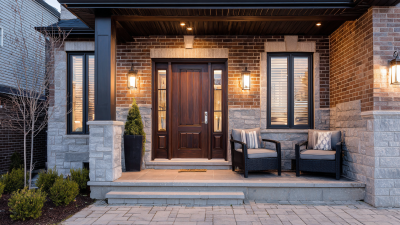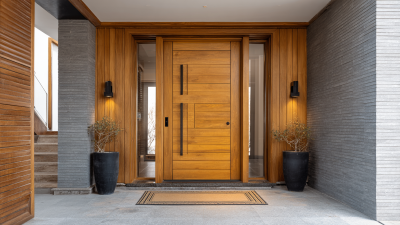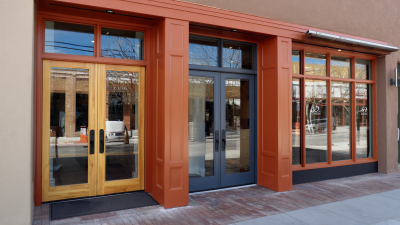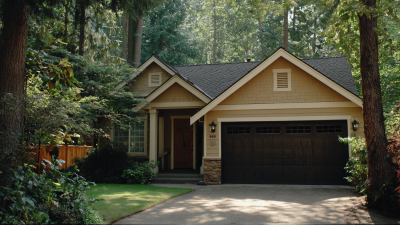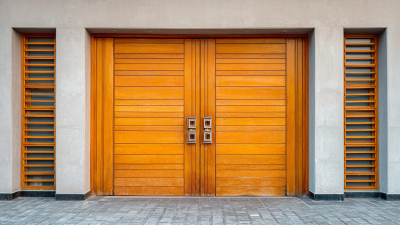Choosing the right wood interior doors is a crucial decision for homeowners and designers alike, as these doors significantly impact the aesthetics and functionality of a space. According to a report from the National Association of Home Builders, over 70% of homebuyers prioritize the quality and design of interior doors when selecting a property. Wood interior doors not only offer aesthetic appeal but also provide durability and sound insulation, making them a popular choice in modern homes.
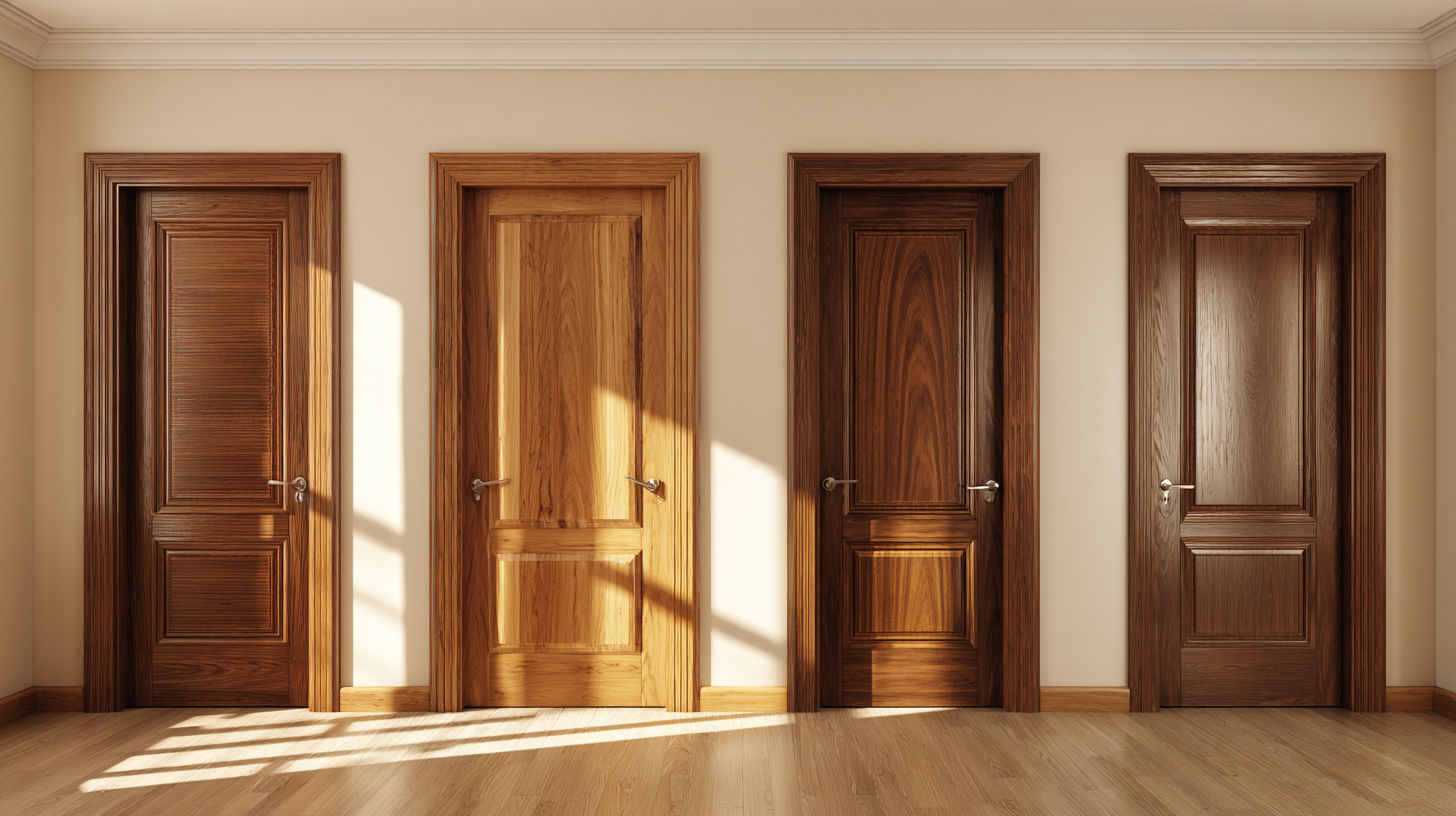
Industry expert John Smith, a recognized authority in architectural design, emphasizes the importance of selecting the right wood interior doors by stating, "The right interior door can transform a home's ambiance and contribute significantly to its overall value." As interior design trends continue to evolve, homeowners are increasingly seeking doors that blend style and practicality. In 2025, we anticipate that eco-friendly materials and customizable designs will be at the forefront of consumer preferences, further emphasizing the need for informed choices in selecting wood interior doors. Understanding the various styles, materials, and finishes available will help you make a decision that not only meets your aesthetic desires but also aligns with your home's functional requirements.
When selecting wood interior doors, understanding the factors influencing their durability is essential. Key material choices play a significant role in determining how well a door will stand the test of time. For instance, doors made from hardwoods such as oak, maple, and cherry tend to outperform softwoods like pine in terms of durability and resistance to wear. According to the Wood Data and Research Institute, hardwoods typically offer a lifespan of 20-30 years under normal conditions, significantly outlasting many softwood options which may only last 10-15 years.
Another critical consideration is the type of finish applied to the wood. A well-executed finish not only enhances the aesthetic appeal but also protects against moisture and scratches. The National Wood Flooring Association emphasizes that a quality urethane finish can add an extra layer of protection, potentially extending door longevity by up to 50%. Additionally, ensuring proper installation and regular maintenance can further enhance the durability of wood doors, making the initial material choice even more advantageous in the long run. Understanding these factors can help homeowners make informed decisions that contribute to the longevity and performance of their interior doors.
When selecting wood interior doors, understanding the differences between hardwoods and softwoods is crucial. Hardwoods, such as oak, maple, and cherry, are derived from deciduous trees and are known for their durability and resistance to wear. According to the American Hardwood Information Center, hardwoods typically possess a higher density than softwoods, resulting in greater strength and longevity. This makes them ideal for interior doors that experience heavy use, as they can withstand impacts and resist dents and scratches.
On the other hand, softwoods like pine, cedar, and fir come from coniferous trees and are usually lighter and more affordable. The U.S. Forest Products Laboratory notes that while softwoods can be more susceptible to damage, they are easier to work with and can be an excellent choice for interior doors in lower-traffic areas. Furthermore, softwoods tend to have unique grain patterns and can take stain and paint well, allowing for more design versatility. Ultimately, the choice between hardwoods and softwoods for interior doors should be guided by considerations of durability, appearance, and budget, ensuring that homeowners make informed decisions that align with their needs and preferences.
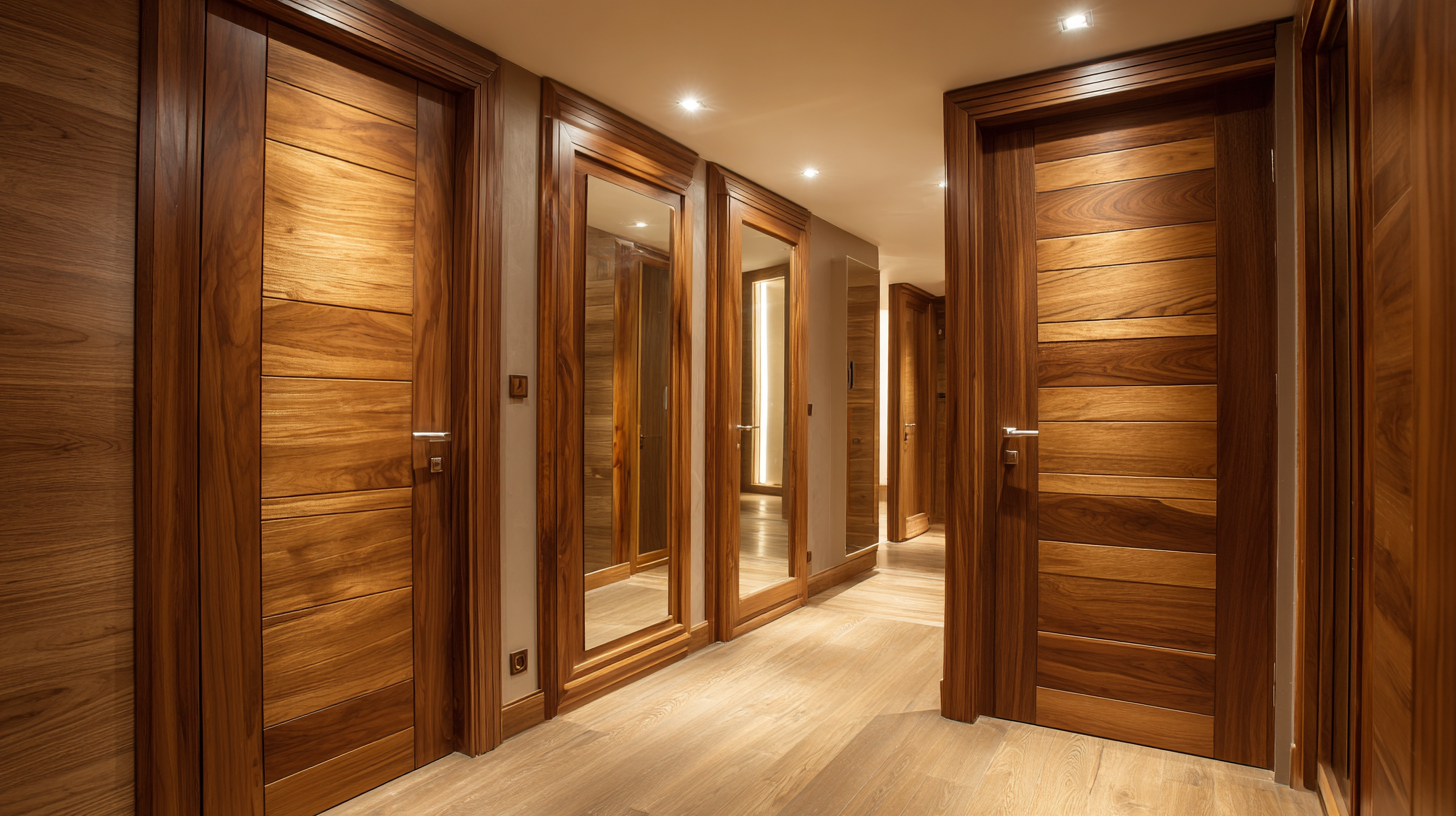
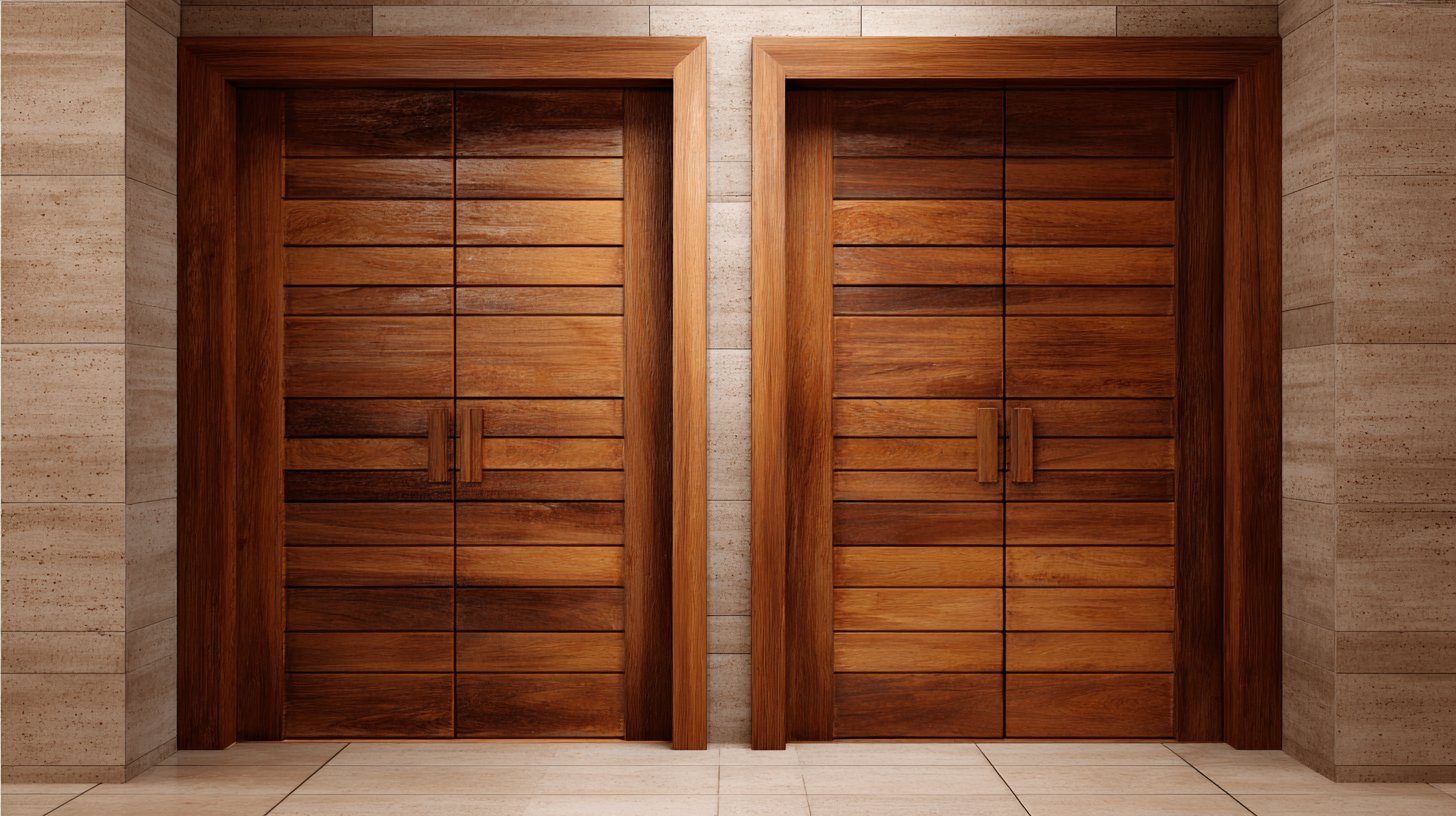 When it comes to selecting wood interior doors, the finishing options play a pivotal role in both aesthetics and longevity. According to the Wood Products Council, the choice of stain or paint can greatly influence the door's ability to withstand wear and tear. For instance, stained doors made from hardwood tend to showcase the natural grain, which not only adds character but also helps to conceal minor scratches. Research indicates that certain stains, particularly those with protective properties, can enhance the door's lifespan by up to 30%, as they form a barrier against moisture and UV damage.
When it comes to selecting wood interior doors, the finishing options play a pivotal role in both aesthetics and longevity. According to the Wood Products Council, the choice of stain or paint can greatly influence the door's ability to withstand wear and tear. For instance, stained doors made from hardwood tend to showcase the natural grain, which not only adds character but also helps to conceal minor scratches. Research indicates that certain stains, particularly those with protective properties, can enhance the door's lifespan by up to 30%, as they form a barrier against moisture and UV damage.
On the other hand, painted doors offer a uniform look and can be customized to match any interior design. The National Paint and Coatings Association reports that high-quality paints contain advanced polymers that provide resilience against chipping and fading, effectively prolonging the door's aesthetic appeal. Additionally, opting for a semi-gloss finish can facilitate easier cleaning, making painted doors a practical choice for high-traffic areas. Ultimately, understanding the implications of your finishing choice will not only elevate the visual appeal of your interior but also ensure the durability of your wood doors for years to come.
When selecting wood interior doors, energy efficiency is a crucial factor that often gets overlooked. Wood, as a natural insulator, provides excellent thermal performance compared to other materials. This means that well-crafted wood doors can effectively minimize heat transfer, maintaining comfortable indoor temperatures and potentially reducing energy bills. When evaluating insulation properties, consider doors with solid cores, which offer superior insulation compared to hollow-core options. This minimizes drafts and keeps heated or cooled air contained within your living spaces.
Additionally, the performance of wood interior doors can be significantly influenced by their design and construction. Features such as weather stripping and strategic sealing can enhance the energy efficiency of these doors. Furthermore, choosing sustainably sourced wood not only benefits the environment but often comes with improved performance standards. Assessing the door's fit within the frame and ensuring proper installation will also play a pivotal role in its overall energy efficiency, guaranteeing that these beautiful, functional pieces contribute positively to your home’s energy performance.
When considering the investment in quality wood interior doors, it's essential to understand the costs involved, not just for the doors themselves but also for installation. With the wooden interior doors market projected to grow, reaching over USD 40.5 billion by 2024 and maintaining a 5% CAGR through 2034, budgeting wisely is crucial. Homeowners should factor in the price of high-quality wood, which can significantly impact the overall expenses. Installation should also be accounted for, as hiring professionals can ensure a perfect fit and longevity.
Choosing the right wood interior doors involves more than just aesthetics. First, consider the type of wood; different species offer unique durability and appearance. Second, check the door's insulation properties, as they can contribute to energy efficiency. Lastly, always compare quotes from multiple suppliers to find competitive pricing without sacrificing quality. By following these tips, you can make an informed decision that balances both style and budget effectively.
| Tip | Description | Estimated Cost ($) | Installation Cost ($) |
|---|---|---|---|
| Material Selection | Choose solid vs hollow core based on budget and insulation needs. | 150 - 300 | 100 - 200 |
| Style Compatibility | Ensure door style complements the overall home design. | 200 - 500 | 150 - 250 |
| Finish Options | Choose between stained, painted, or natural finishes. | 50 - 150 | 50 - 100 |
| Energy Efficiency | Select doors that provide good insulation to enhance efficiency. | 250 - 400 | 200 - 300 |
| Size Considerations | Measure openings carefully to ensure a proper fit. | 200 - 300 | 150 - 250 |
| Hardware Choices | Select knobs, handles, and hinges that match the door style. | 30 - 100 | 20 - 50 |
| Customization | Consider custom designs for unique spaces. | 500 - 1000 | 300 - 500 |
| Durability | Choose materials based on expected wear and tear. | 150 - 300 | 100 - 200 |
| Maintenance Needs | Consider how much upkeep will be required. | 100 - 200 | 50 - 100 |
| Budget Planning | Calculate total costs including materials and installation. | Total variable | Variable based on choice |
